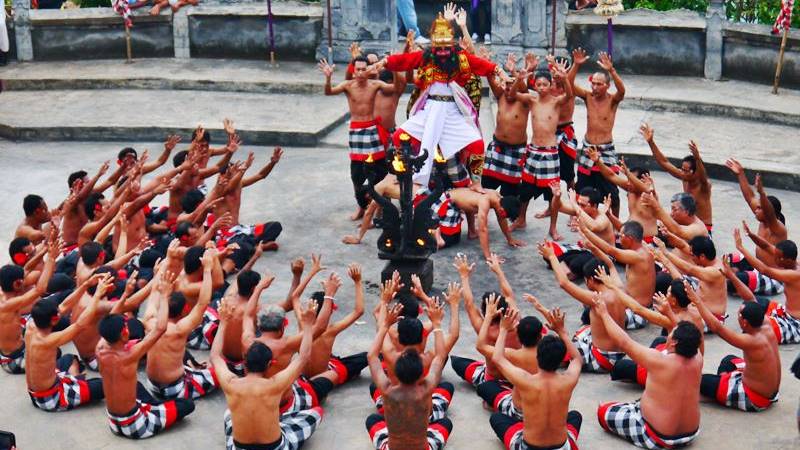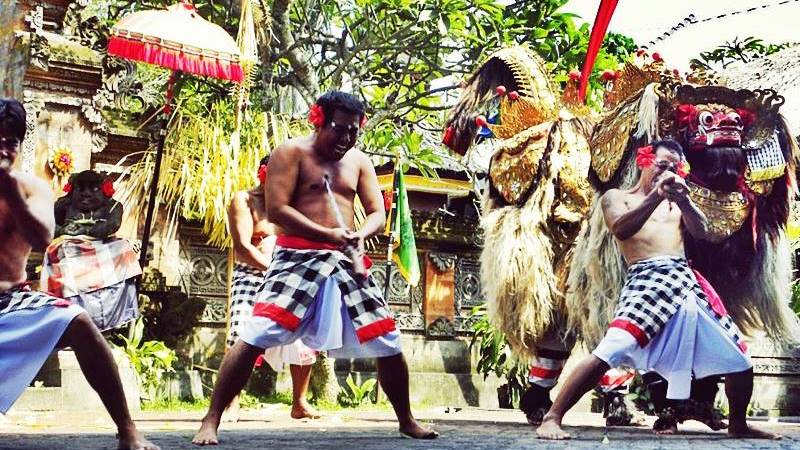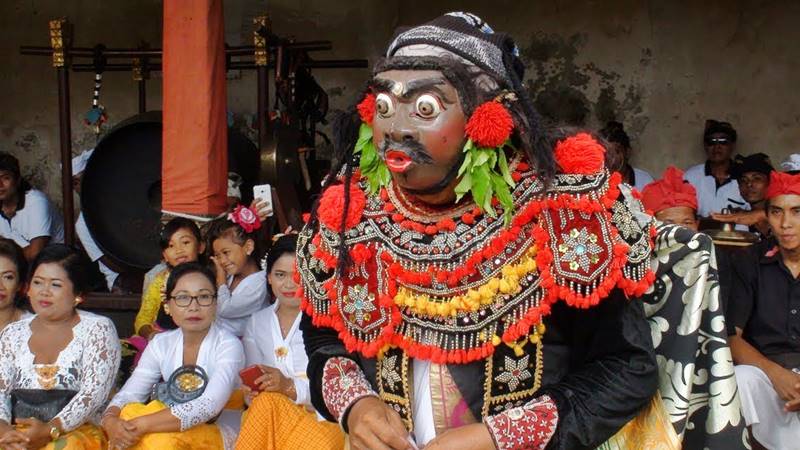
Bali welcomes every visitors with the dance, colors and culture that are intertwined with its natural beauty. An island shaped by religion and dances, it offers visitors exciting treks through its lush tropical jungle or rice fields and opportunities to savor the refreshing air of mountainous retreats.
Go around Bali and experience the daily life of the Balinese people in the village.
The Balinese village pays tribune to the harmony of its human being with nature. Every corner of the villages are full with decoration. The Balinese village is typically host to a set of three temples called kahyangan tiga. Each related to a focal aspect of the village symbolic life. Instead of being closed, roof structures, the temples are open spaces, demarcated only by wall and carved gates, with trees alongside thatched shrines in their inside.
The temples are the heart of the Balinese life and are celebrated its anniversary in every 210 days.
Adding to the beauty and wealth of the Balinese culture is its dance, which is performed during temple festivals and its ceremonies of the cycle of life and death. Dances are so much a part of Balinese daily rituals performances that visitors see in hotels, restaurants are just a fraction of the wealth of Balinese Dance.
Though the origin of the Balinese dance is back long before any written history, inscriptions from the 9th century named Wayang (puppet theatre) and Topeng Mask (mask dance) as the main entertainment of the day. Even gamelan music had already been performed in the 1st millenium BC.
Balinese Dances are inspirable from religion. A small offering of food and flowers must precede even dances for tourist. Before performing many dancers pray at their family shrines, appealing for holy inspiration from the gods.
The Dances of Bali

The Kecak Dance
No other dance is so unnerving as the amazing Kecak;150 men who, by a regimented counterplay of sounds, simulate the orchestration of the gamelan. Kecak, a name indicating the “chak-chak-chak” sounds, evolved from the male chorus of the ritual Sanghyang trance ceremony. Kecaks include a drama, in which the circle of light around the torch becomes a stage, and its periphery of men, a living theater with all dramatic effects. Accompanied by the bizarre music of human instrument, the storyteller relates the episode enacted within the performance, usually drawn from the Ramayana.

The Barong Dance
Barong, mystical creature with a long sway back and curved tail, represents the affirmative, the protector of mankind, the glory of the high sun, and the favorable spirits associated with the right and white magic. The widow-witch Rangda is its complement. She rules the evil spirits and witches who haunt the graveyards late at night. Her habitat is darkness and her specialties lie with the practice of black magic, the destructive force of the left. Both figures are of the same earthy substance, possessing strong magical prowess. Somewhere in a mythical past, the Barong was won over to the side of humanity, and, in the play fights on behalf of the people against the intruding death force of Rangda

The Legong Kraton
The highly stylized Legong Kraton enacts a drama of a most purified and abstract kind. The story is performed by three dancers: the condong, a female attendant of the court, and two identically dressed Legong (Dancers), who adopt the roles of royal persons. Originally, a storyteller sat with the orchestra and chanted the narrative, but even this has been refined away in many Legongs. Only the suggestive themes of the magnificent gamelan gong (the full Balinese orchestra) and the minds of the audience conjure up imaginary changes of the scene in the underlying play of Legong Kraton.

The Topeng Mask
There are many forms of Topeng, depending on the masks used and the performer’s style. A popular solo performance is the Topeng Tua, representing the movements of and old man. In a normal Topeng Play, three or four actors, usually all men, impersonate all the characters. A full set of 30 to 40 Topeng masks belongs to the principal Topeng actors who is responsible for the series of eccentric personalities that produce the comedy of the play. To watch a good Topeng actor is truly inspirational. Through an endless resource of bizarre mannerisms and tones of speech, he manages to concentrate the whole of human folly into one serial panorama of grotesquely masks comics.
